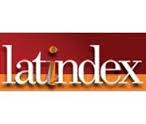New criteria for the choice of training sample size for model selection and prediction: the cubic root rule
Un nuevo criterio para la elección del tamaño de la muestra de entrenamiento para la selección de modelos y de predicción: la regla de la raíz cúbica
Palabras clave:
5% cubic root rule, intrinsec priors, objective bayesian hypothesis testing, training sample size (en)Regla de la raiz cubica 5%, apriori intrinseca, pruebas de hipótesis bayesiana objetivas, tamaño de muestra de entrenamiento (es)
Descargas
The size of a training sample in Objective Bayesian Testing and Model Selection is a central problem in the theory and in the practice. We concentrate here in simulated training samples and in simple hypothesis. The striking result is that even in the simplest of situations, the optimal training sample M, can be minimal (for the identification of the sampling model) or maximal (for optimal prediction of future data). We suggest a compromise that seems to work well whatever the purpose of the analysis: the 5% cubic root rule: M=min[0.05*n, n^{1/3}]. We proceed to define a comprehensive loss function that combines identification errors and prediction errors, appropriately standardized. We find that the very simple cubic root rule is extremely close to an over- all optimum for a wide selection of sample sizes and cutting points that define the decision rules. The first time that the cubic root has been proposed is in Pericchi (2010). This article propose to generalize the rule and to take full statistical advantage for realistic situations. Another way to look at the rule, is as a synthesis of the rationale that justify both AIC and BIC.
Referencias
Abramowitz, M. ; Stegun, I. A. (1972). Handbook of Mathematical Functions with Formulas, Graphs, and Mathematical Tables. New York: Dover Publications, Inc.
Berger J.O. and Pericchi L.R. (1996a) The Intrinsic Bayes Factor for Model Selection and Prediction. Jour, Amer. Statist. Ass., 91, 109-122.
Berger J.O. and Pericchi L.R. (1996b) The Intrinsic Bayes Factor for
Linear Models. Bayesian Statistics 5, Bernardo et al. eds,
Oxford University Press, 23-42.
Casella G. and Moreno E. (2009). Assessing Robustness of Intrinsic Test of Independence in Two-way Contingency Tables. Tech Report.
Chakrabarti A. and Ghosh J.(2007). Some Aspects of Bayesian Model Selection for Prediction. Bayesian Statistics, 8, 51-90.
Kass R.E. and Wasserman L. (1995). A Reference Bayesian Test for
Nested Hypothesis and its Relationship with Schwarz Criterion.
Jour, Amer. Statist. Ass. 90, 928-934.
Pericchi, L.R. (2010). How large should be the training sample? Invited Chapter in the book: ''Frontiers of Decision Making and Bayesian Analysis. In Honor of James O. Berger'', Chen MH et al editors. Springer. (In press).
Spiegelhalter DJ, Best NG, Carlin BP and Van der Linde A (2002), 'Bayesian Measures of Model Complexity and Fit (with Discussion), Journal of the Royal Statistical Society, Series B, 64(4):583-616, and in The BUGS Project DIC www.mrc-bsu.cam.ac.uk/bugs/winbugs/dicpage.shtml.
Cómo citar
APA
ACM
ACS
ABNT
Chicago
Harvard
IEEE
MLA
Turabian
Vancouver
Descargar cita
Visitas a la página del resumen del artículo
Descargas
Licencia
Los autores o titulares del derecho de autor de cada artículo confieren a la Revista de la Facultad de Ciencias de la Universidad Nacional de Colombia una autorización no exclusiva, limitada y gratuita sobre el artículo que una vez evaluado y aprobado se envía para su posterior publicación ajustándose a las siguientes características:
1. Se remite la versión corregida de acuerdo con las sugerencias de los evaluadores y se aclara que el artículo mencionado se trata de un documento inédito sobre el que se tienen los derechos que se autorizan y se asume total responsabilidad por el contenido de su obra ante la Revista de la Facultad de Ciencias, la Universidad Nacional de Colombia y ante terceros.
2. La autorización conferida a la revista estará vigente a partir de la fecha en que se incluye en el volumen y número respectivo de la Revista de la Facultad de Ciencias en el Sistema Open Journal Systems y en la página principal de la revista (https://revistas.unal.edu.co/index.php/rfc/index), así como en las diferentes bases e índices de datos en que se encuentra indexada la publicación.
3. Los autores autorizan a la Revista de la Facultad de Ciencias de la Universidad Nacional de Colombia para publicar el documento en el formato en que sea requerido (impreso, digital, electrónico o cualquier otro conocido o por conocer) y autorizan a la Revista de la Facultad de Ciencias para incluir la obra en los índices y buscadores que estimen necesarios para promover su difusión.
4. Los autores aceptan que la autorización se hace a título gratuito, por lo tanto renuncian a recibir emolumento alguno por la publicación, distribución, comunicación pública y cualquier otro uso que se haga en los términos de la presente autorización.
5. Todos los contenidos de la Revista de la Facultad de Ciencias, están publicados bajo la Licencia Creative Commons Atribución – No comercial – Sin Derivar 4.0.
MODELO DE CARTA DE PRESENTACIÓN y CESIÓN DE DERECHOS DE AUTOR





















